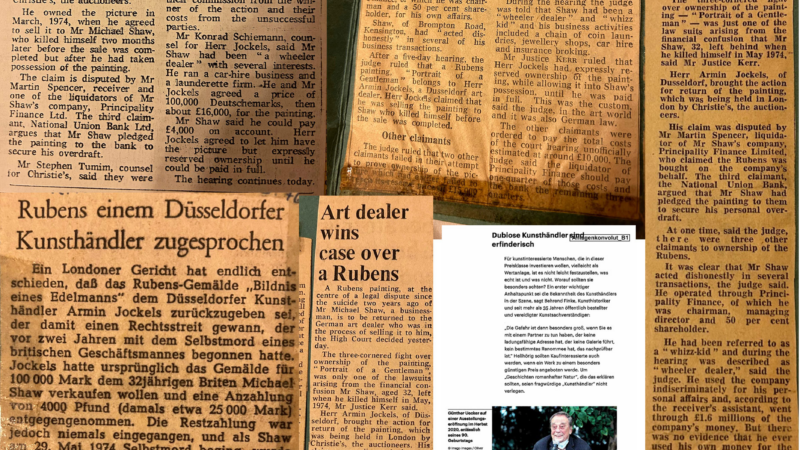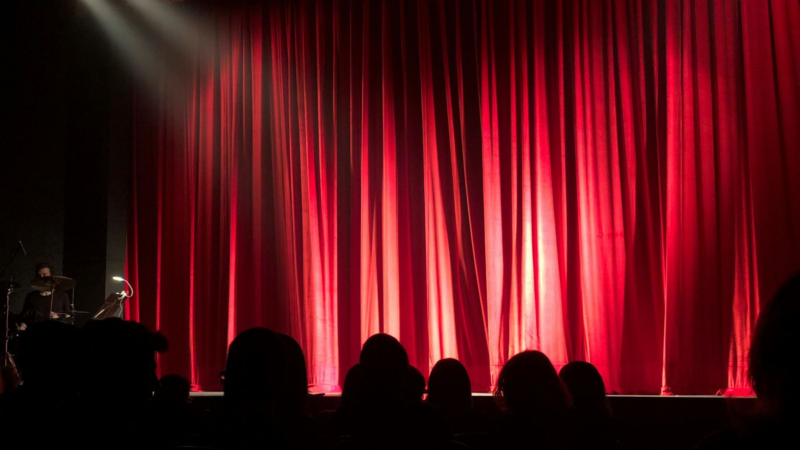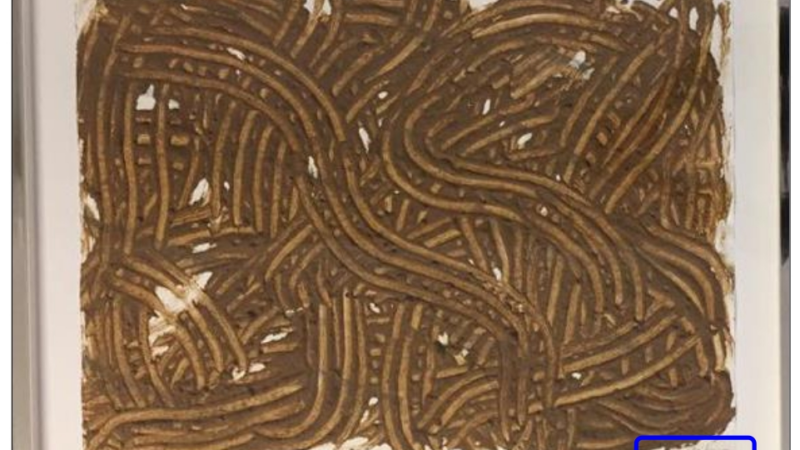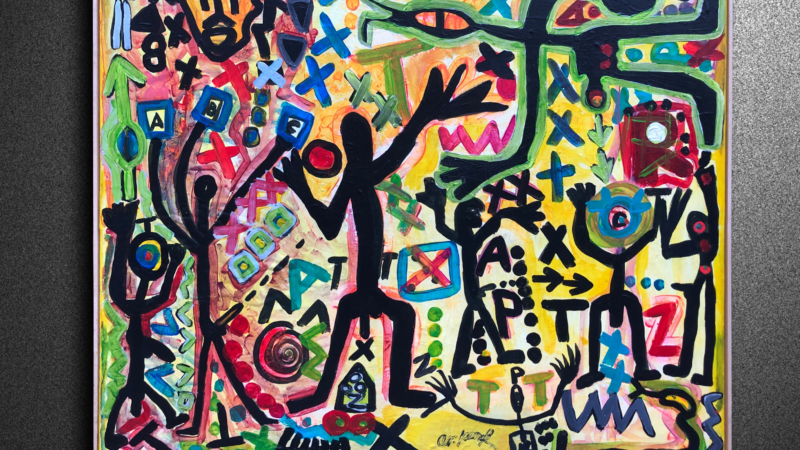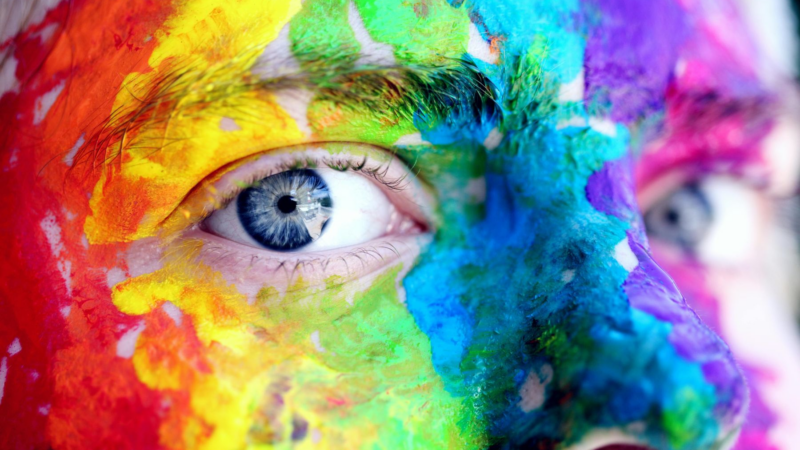Photographs by Karl Blossfeldt, Jim Dine and Roselyne Titaud in Cologne
On view: February 22 to July 21, 2019, in Room 1
Press preview: Wednesday, February 20, 11am (Please first obtain accreditation for the press preview by writing an informal e-mail to pr@sk-kultur.de)
Opening: Thursday, February 21, 7pm
Nature continually beguiles us with its wonders – the proliferating vegetation with myriad plant species and forms, their spatial disposition, the light that plays across them and the overall effect – and capturing them photographically is at the heart of the exhibition. The works on view manifest close observation and sensitive perception of flora and the verdant environment as documented with the camera, while also encouraging us to look attentively at photographic images crafted by two very different artists. It“s a question of reality and its interpretation.
The works of Karl Blossfeldt (1865-1932) and Jim Dine (b. 1935) provide a compelling springboard for examining this question. Even though the two artists are generations apart and represent very different artistic approaches, their works make it clear that the mystery of nature, its magic as well as its regularity and order, is a never-ending source of creative inspiration. Blossfeldt and Dine are united by their love of nature, their nuanced engagement with their pictorial subjects, and also the painstaking precision of their photographic compositions.
Karl Blossfeldt
Karl Blossfeldt, who is represented in the exhibition by over 70 original photographs made into gelatin silver prints, pursued photography as part of his teaching activities at the Unterrichtsanstalt des Königlichen Kunstgewerbemuseums (Institute of the Royal Arts & Crafts Museum) in Berlin. Born in Schielo (Harz, Saxony-Anhalt), Blossfeldt studied at the institute between 1884/85 and 1888 and subsequently worked as a modeler in the bronze workshop.
The year 1898 is thought to mark the beginning of his photographic activity, because Blossfeldt started that year to use photographs in his art teaching as models for handcrafted pieces and individual drawings. Photographic images not only enabled him to present to his students the plant material he had collected in the environs of Berlin in a freshly documented state – rather than trying to use quickly-wilting natural plants – it also let him magnify their smallest details and occasionally show his specimens in a specially prepared and arranged form. Blossfeldt focused on the fascination of nature“s formal repertoire, which he demonstrated in his photographs with the greatest of precision. He typically showcased the form of a particular plant before a flat, neutral background. In this respect, he used one of the purest forms of pictorial composition, zeroing in on the relevant subject matter in quasi-scientific fashion.
Blossfeldt“s rise to fame was launched by an exhibition of his photographs in Berlin in 1926 by the gallerist Karl Nierendorf, who showed them alongside sculptures from Africa and New Guinea. In 1928 Blossfeldt published his groundbreaking book Urformen der Kunst (Art Forms in Nature), and at the beginning of 1932 Wundergarten der Natur (The Magic Garden of Nature). Karl Blossfeldt died on December 3, 1932, in Berlin. Today he is one of the most renowned artists and photographers of the twentieth century. Along with August Sander and Albert Renger-Patzsch, Blossfeldt ranks as one of the key figures of the New Vision movement in photography.
Jim Dine
The exhibition „Poetry of Plants“ presents Blossfeldt“s works in conjunction with around 40 heliogravures by the American artist Jim Dine. They are larger in size and explore the lyrical aspect of the plant world in a manner that is formally remote from Blossfeldt“s approach and yet still related in some ways. In both cases we encounter a highly intense examination of the subject with the camera used to capture its details, as well as the integration of the individual images into an insightful series.
Jim Dine, who is at home in many different artistic media, whether painting, sculpture, printmaking, literature, or poetry, first made a name for himself on New York“s Pop Art scene in the late 1950s. He is well-known today mostly for motifs such as bathrobes, heart shapes, paint palettes, brushes, and tools. But nature“s creations have also been a consuming interest for the artist, as is evident from his many depictions of trees, branches, and flowers and their inclusion in his installations. As early as 1969, he already made a portfolio of Vegetables, his earliest work dealing with botanical forms and colors. Dine“s passion for nature and the plant world is likewise reflected in the Entrada Drive series of heliogravures from the early 2000s that is on display in the exhibition. These works are presented for the first time in Europe and have at all only been exhibited once at New York“s University Museum „Neuberger Museum of Art“.
They date back to a working stay in Los Angeles in the winter of 2001, when the artist took up residence on Entrada Drive with his wife, Diana Michener. What he would remember most was the peculiar atmospheric light, which felt to him like a „gray July.“ The heliogravures based on photographs Dine took in LA accordingly have a somber tonality in some cases. These are interspersed in the show with photos the artist took in botanical gardens in Berlin and New York. In contrast to Blossfeldt, Jim Dine looks beyond the individual plant forms at the broader picture, at scenes brimming with vegetation, bushes, and shrubbery.
With their finely calibrated gray tones, his heliogravures betray a long and elaborate process. These are handmade works, based on photographs – in this case medium-format black-and-white negatives – that are converted to slides in the original size of the planned heliogravures and exposed in contact with light-sensitive, gelatin-coated copper plates.
A look at the collection and cooperation with partners
The idea of bringing together works by Karl Blossfeldt and Jim Dine was inspired by research into the collection“s own archives. The presentation of works by Karl Blossfeldt is based on twenty years of close cooperation between Die Photographische Sammlung/SK Stiftung Kultur and Berlin University of the Arts, which owns over 600 of Blossfeldt“s original prints along with other material. A large number of these works are on long-term loan to Die Photographische Sammlung/SK Stiftung Kultur, and these are sometimes exchanged with or supplemented by holdings from the university and featured in exhibitions or publications. In 2009 an annotated catalogue raisonne was compiled of the entire Blossfeldt collection, accessible on the website of Die Photographische Sammlung/SK Stiftung Kultur ( https://www.photographie-sk-kultur.de/karl-blossfeldt/werke/).
The presentation of Jim Dine“s Entrada Drive series of heliogravures draws on an extensive collection of approximately 1,500 photographic works that the artist has entrusted to the care of Die Photographische Sammlung/SK Stiftung Kultur in 2005. This is the fourth exhibition that the institution has dedicated to the artist.
Roselyne Titaud – „Geographies des limites humaines“: Photographs
In Rooms 2 and 3, photographic works by Roselyne Titaud (b. 1977) will be on view. Titaud finds her motifs in interiors, including still lifes she encounters there, as well as outdoors in nature, for example in the forests and river landscapes of Germany and France. Roselyne Titaud studied at the ecole des Beaux-arts in Saint-etienne and has been living for the past several years in Berlin.
Under the title „Geographies des limites humaines“ – a reference to a poem Paul Eluard wrote in 1936 – the artist has made a selection from various photographic series (A bruit, Tiefe [Depth], 2012-13; Interieurs, Arrangements, 2001-07; Am Löwentor [At the Lion Gate], 2009; Les vallees, 2015; La Loire, 2017-18) and combined these images with other individual motifs from her oeuvre in a harmonious arrangement rife with associations. Rather than following chronological order like a retrospective, Titaud is concerned here with cross-references between motifs, themes, and formal aspects, exploring their changing contexts of meaning as they point in one direction or the other. Issues concerning media and forms of presentation also play a role.
The still life genre is a central focus for Titaud. She seeks out her pictorial subjects in homes in France and Berlin, her photographs revealing private decorative arrangements that tell of personal preferences and tastes. These interior scenes summon moments of remembrance and are thus imbued with a distinctly temporal component. In Titaud“s photographs we discover porcelain and glass in a variety of shapes and colors, as tableware, vases or figures; decorative fabrics with patterns and fringes, made out of lace or woven, as cushions and upholstery; armchairs; display cases; chests of drawers; and small tables on which objects are draped. Flora and fauna appear in a wide variety of motifs: flowers, plants, and also animal replicas. The spectrum ranges from a bouquet of flowers in a vase, to potted plants, artificial or genuine, to floral patterns on wallpaper, carpets, or throws. Animals as porcelain figures, painted in pictures, or in the form of shells or coral, populate many of Roselyne Titaud“s photographs. This cosmos of objects taken from nature seems at once familiar and yet somehow strange and otherworldly. It spirits us away to a bygone era when furnishing fashions and styles were subject to different aesthetic and material parameters than today. And these arrangements and interiors also ultimately reflect social structures, notions of family life and belonging, and economic conditions.
„The Lobster Quadrille“: Photographs by Roselyne Titaud, Herbert Bayer, Jim Dine, Ruth Hallensleben, Willi Moegle and Anonymous
An exhibition for „Artist Meets Archive“ and the Internationale Photoszene Köln (May 4 to July 21, 2019, in Rooms 3 and 4 – Opening: Sunday, May 5, 2 pm)
Starting May 3rd, a second, newly installed section of Roselyne Titaud“s exhibition will be on view in Room 3. In the context of „Artist Meets Archive,“ a cooperative project with the Internationale Photoszene Köln festival, the artist was invited to engage with the archival holdings of Die Photographische Sammlung/SK Stiftung Kultur. Titaud was particularly intrigued by the „hidden treasures“ she found, the byways of the collection, and decided to set them in an associative dialogue with her own works. She selected photographs by Herbert Bayer, Jim Dine, Ruth Hallensleben, Willi Moegle, and Anonymous. The diverse works all become part of a visual alphabet which, in the artist“s constellation, offers fresh perspectives and interpretations. „The Lobster Quadrille“ is the name of a chapter in Lewis Carroll“s novel Alice in Wonderland in which various marine animals strike up a colorful round dance, changing partners to try out ever-new configurations – an open and dynamic system of references that serves as a fitting symbol for the exhibition concept.
Press photos for the exhibitions are available in the Press section on the SK Stiftung Kultur website, direct link: http://bit.ly/2F5lcCt
Please address press inquiries to: +49 221 88895 105, pr@sk-kultur.de
With its collection, the scholarly maintenance of its holdings, its research projects, and its exhibitions, all of which center around objective, documentary photography, Die Photographische Sammlung / SK Stiftung Kultur contributes to a wide range of regional, national, and international artistic and cultural offerings.The institution“s collection comprises more than 30,000 works by historical and contemporary photographers of various nationalities. A significant share of these-more than 10,500 negatives and 5,500 original prints-is part of the August Sander Archive, followed by negatives and prints from important series by the artist couple Bernd and Hilla Becher. These two photographic stances, are since 1992 and 1996, in terms of style and content decisive for the further development of the collection.
There are two to three exhibitions a year, most of them accomponied by publications compiled at Die Photographische Sammlung / SK Stiftung Kultur. Presentations are organized that are assembled from the institution“s own collection as well as displays of works that enter into a dialogue with it. The exchange with regional, national, and international institutions plays an important role, as evidenced by numerous collaborative exhibition projects and a lively circulation of loans.
Company-Contact
Die Photographische Sammlung/SK Stiftung Kultur
Gabriele Conrath-Scholl
Im Mediapark 7
50670 Köln
Phone: +4922188895300
E-Mail: photographie@sk-kultur.de
Url: http://www.photographie-sk-kultur.de
Press
SK Stiftung Kultur der Sparkasse KölnBonn
Ralf Convents
Im Mediapark 7
50670 Köln
Phone: +4922188895105
E-Mail: pr@sk-kultur.de
Url: http://www.sk-kultur.de


